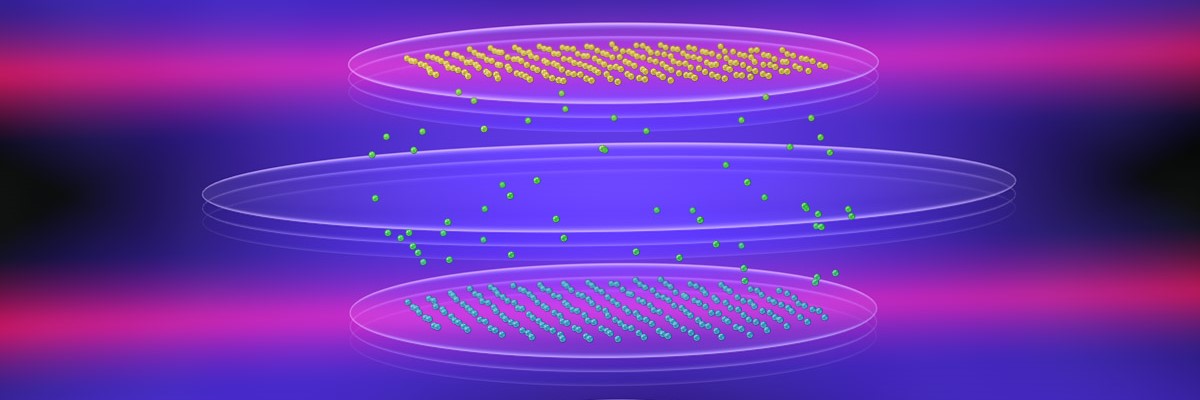Trapping ions for quantum applications

Numerical simulation of a two-layered crystal of 200 ions, shown as colored markers, that can be realised in devices called Penning traps. Lasers, as shown by the parallel red beams and crossed blue beams forming a lattice, can be used to manipulate the ions and engineer interactions between them (Image: Steven Burrows, JILA)
Charged atoms or ions trapped in electric and magnetic fields are currently a leading hardware platform for quantum computing, quantum simulation and high-precision sensing. The most advanced trapped ion experiments today operate with 1D chains or 2D crystals of ions. Extending this to large-scale multilayered 3D crystals has eluded scientists so far.
An international collaboration of physicists from India and the USA has now proposed a way to store and manipulate hundreds of ions in a multilayered array configuration. The team includes Samarth Hawaldar (BS/MS student) and Athreya Shankar (CV Raman postdoctoral fellow) at IISc.
Quantum experiments with trapped ions involve encoding a quantum bit, or qubit, in each ion. Lasers and microwaves can be used to manipulate the state of the ions. The ions also experience each other’s motion through the Coulomb force; this can be used to control their interactions, which, in turn, can be used to entangle the qubits encoded in the ions. But so far, these ions have been confined to 1D or 2D geometries.
The team turned to a type of ion trap called a Penning trap, which can store ions by subjecting them to an electrostatic field followed by a strong magnetic field. Under such conditions, the ions also repel each other – the balance of the applied fields and their mutual repulsion leads to the formation of stable crystals.
Typically, the electrostatic field is harmonic in nature – it acts like an ideal spring to which the ions are harnessed, and the trap can be used to store 2D planar crystals or 3D spheroid-like structures. Remarkably, the authors found that adding an anharmonic component to the electrostatic field caused the 3D spheroids to organise into two well-defined layers at different heights, resulting in a bilayer crystal. This can potentially be extended to realise three or more layers of ions as well.
The authors anticipate that this work will open up new opportunities in the areas of quantum sensing and quantum simulation.
The team also includes Prakriti Shahi, undergraduate student at IIT Bombay; Ana Maria Rey, researcher at JILA, Colorado, USA; Allison Carter and John Bollinger, researchers at the National Institute of Standards and Technology (NIST), Colorado, USA.
REFERENCE:
Hawaldar S, Shahi P, Carter AL, Rey AM, Bollinger JJ, Shankar A, Bilayer Crystals of Trapped Ions for Quantum Information Processing, Physical Review X (2024).
https://journals.aps.org/prx/abstract/10.1103/PhysRevX.14.031030




